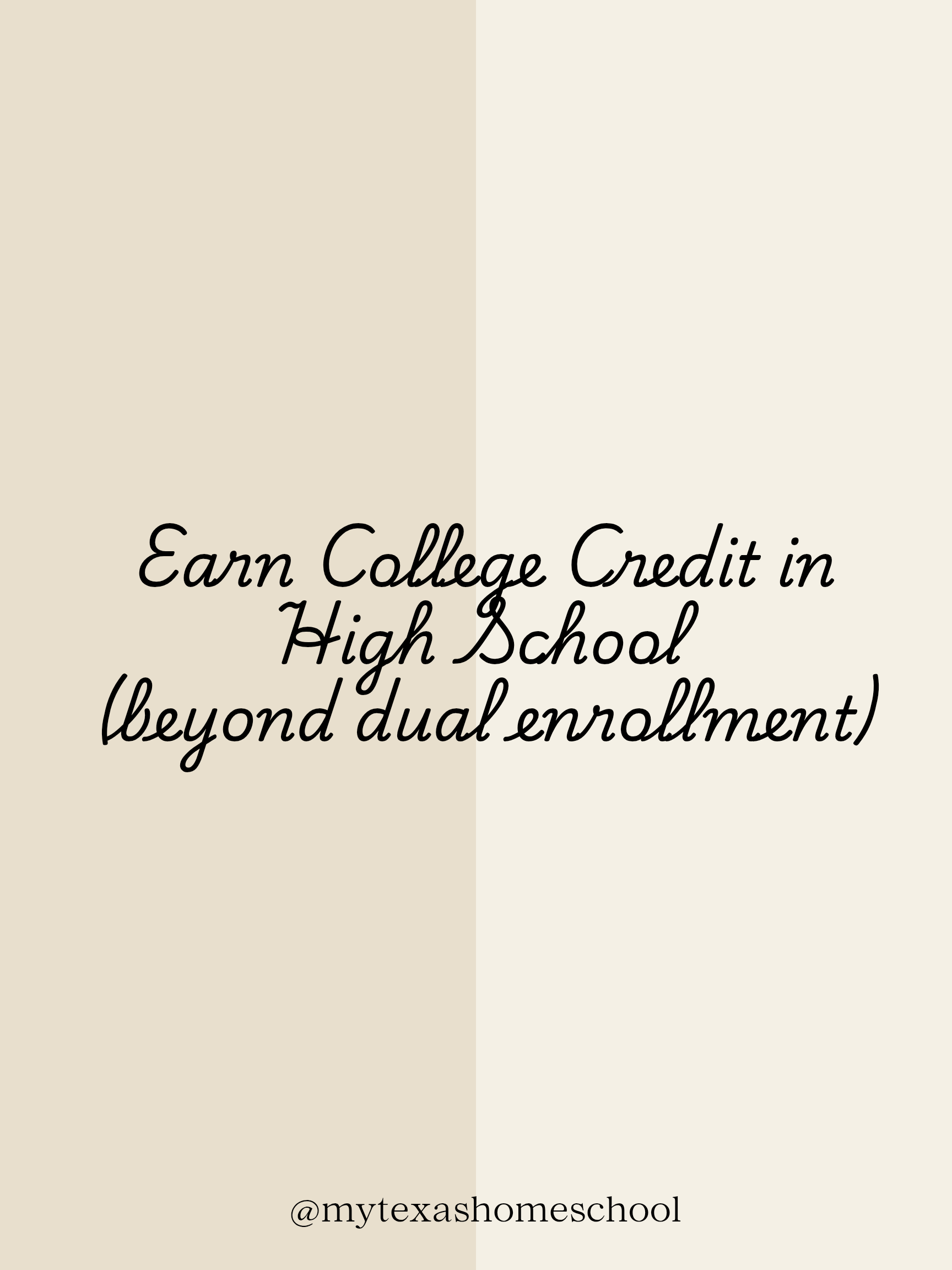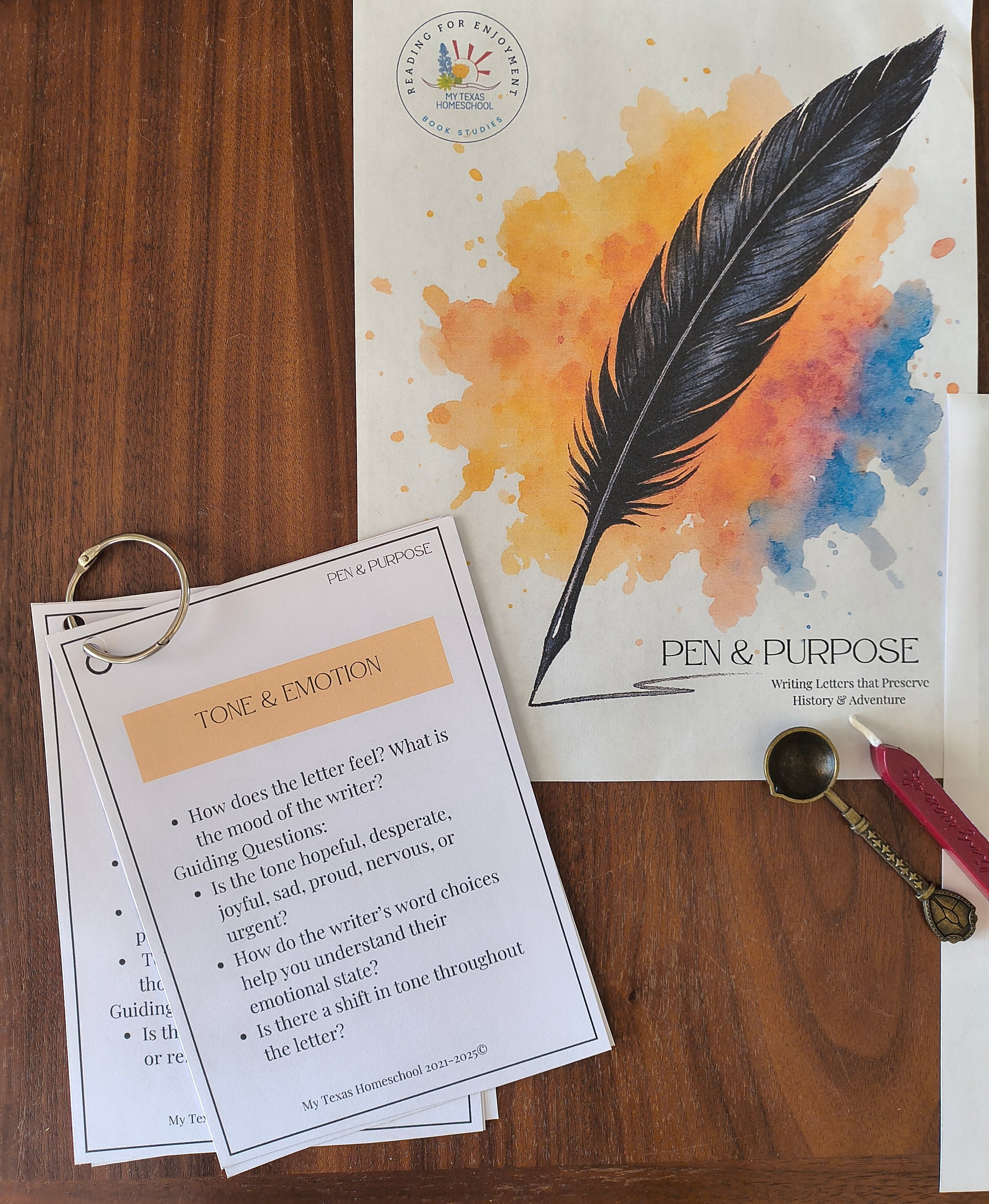Get College Credit in American Literature Without Taking a Class
Multiple ways of getting college credits in high school
Getting college credits in high school is growing in popularity, and why shouldn’t it? College degrees are not only expensive, they are a huge commitment to complete. Having the opportunity to test the waters or minimize how many courses you have to pay for later is not a bad idea.
The traditional community college route may not appeal to everyone though, and that’s why I’ve been looking into CLEP exams. The state I grew up in required anyone receiving a state scholarship to take five CLEP exams. I didn’t prepare at all and passed one: psychology.
However, I’m a literature teacher who taught in public school before homeschooling so I’ll happily kill two birds with one stone buy creating courses which align to a dual enrollment alternative: The CLEP Exam.
What is a CLEP exam?
A CLEP exam (College-Level Examination Program) is a standardized test offered by the College Board that allows students to earn college credit for knowledge they already have or will acquire in a school year course—and if they pass the exam at the end of their year long course, they could receive college credit!
There are over 30 CLEP exams in subjects like history, literature, science, math, and more. Each exam typically takes 90 minutes and costs significantly less than a college course, usually around $95 for the test, plus a proctoring fee from the testing center.
It still is far less expensive than the $400 per course which community college classes cost, or the $1000+ per course at a university.
How CLEP works:
You study for a subject (like American Literature).
You take the CLEP test at a testing center or online with remote proctoring.
If you pass (usually with a score of 50+ out of 80), many colleges will grant you 3–6 credit hours - for under $200.
Key Facts on CLEP exams from College Board
If you’re interested in looking into options past CLEP or dual enrollment, I’d recommend reading Homeschooling for College Credit, 2nd Edition by Jennifer Cook-DeRosa. She gives a thorough educations on options and the things we as parents should look for regarding transferability of courses and coursework.
A high school American Literature Course That Prepares Students for the CLEP
Preparing students for the CLEP American Literature exam can feel overwhelming—especially when you're trying to balance literary comprehension with test-readiness. Whether you're a homeschool parent or a high school teacher (and I’m both), knowing exactly what to cover makes all the difference and that has taken me some research. In this post, I’ll walk you through my thought process on how to create a focused American Literature course that prepares students for the CLEP while also creating a standalone course which works to teach America’s rich literary heritage and cultural identity.
So let’s dive into recommended readings, author highlights, and a suggested scope and sequence to build a powerful foundation in American Lit.
What Does the CLEP American Literature Exam Cover?
The CLEP American Literature exam tests students' knowledge of important works, literary movements, and historical context in literature from pre-colonial times to the present. According to the College Board CLEP Guide, here's how the exam breaks down:
CLEP Topic Breakdown
35–40%: Analysis of poems, prose, and excerpts
25–30%: Knowledge of major works, characters, plots, and styles
15–20%: Understanding of literary terms, forms, and devices
15–20%: Historical context, cultural influence, and literary traditions
The test includes multiple-choice questions covering authors from the 17th to the 20th century. A strong course has to include major literary movements, notable authors, and primary source readings that reflect American history and identity. You can find this breakdown and other links at College Board American Literature CLEP.
Key Authors and Genres to Include in an American Literature CLEP Study Guide
To meet CLEP requirements, I want the things we study for American Literature to move chronologically while also hitting major movements and figures throughout United States History.
Pre-Colonial and Colonial Literature
Anne Bradstreet – Early Puritan poetry
Jonathan Edwards – Fire-and-brimstone sermons like Sinners in the Hands of an Angry God (They always excerpt the worst parts of his sermons and leave all the redemption out in texts. I do not agree.)
Indigenous oral traditions – Focus on Native American creation stories and oral storytelling traditions
American Fairytales and Folktales like Sleepy Hollow, Rip Van Winkle, and larger than life characters like Paul Bunyan & Johnny Appleseed
Revolutionary and Enlightenment Era
Letters and speeches – Common Sense by Thomas Paine, The Federalist Papers, letters from the Founding Father
Writings of Lewis and Clark – Primary documents, travel journals
Benjamin Franklin – maxims & essays; his maxims are so fun to read
Romanticism, Transcendentalism, Gothic
Nathaniel Hawthorne – The Scarlet Letter is the major work by Hawthorne, but in the interest of time I’d prefer short stories like Young Goodman Brown. I might read the prologue to The Scarlet Letter in our co-op class though. I’m convinced Hawthorne would have been a director or cinematographer had he been born in our era.
Henry David Thoreau & Robert Frost – Walden and Civil Disobedience are excellent and unique reads, while Frost’s poetry is classically American.
Edgar Allan Poe – Poetry and Gothic tales: The Raven, The Tell-Tale Heart
Realism, Naturalism, and Modernism
Mark Twain – Consider excerpts from Huckleberry Finn or Life on the Mississippi. I’m currently also looking at Pudd'nhead Wilson. It has heavier themes but kids these days are very sophisticated at understanding narrative and inherent triggers.
Stories centered on women - Kate Chopin’s The Awakening and The Yellow Wallpaper by Charlotte Perkins Gilman
Southern Gothic genre - usually post civil war, generally dark; features authors like William Faulkner & Flannery O’Connor
Contemporary and 20th Century; Themes of the Era
Harper Lee – To Kill a Mockingbird (civil rights, moral conscience)
Ernest Hemingway – Hills Like White Elephants, The Old Man and the Sea; I like both of these but the content of Hills Like White Elephants is controversial.
E.E. Cummings – Free verse and experimental structure; I just adore his work
F. Scott Fitzgerald – The Great Gatsby (Jazz Age, disillusionment, social critique)
Raymond Carver – Minimalist short fiction, beautifully done.
William Carlos Williams – “The Red Wheelbarrow,” “This Is Just to Say”
Ray Bradbury – Fahrenheit 451 (censorship, dystopia)
Tim O’Brien – The Things They Carried (Vietnam War era, memory, truth)
Structuring Your American Literature Course
Creating a strong, CLEP-aligned literature course that can be taught as a standalone can follow a semester-based or full-year plan. Here’s what I am thinking so far for scope and sequence:
Suggested Structure:
Weeks 1–3: Pre-Colonial, Indigenous & Colonial authors
Weeks 4–6: Enlightenment & Revolutionary writers
Weeks 7–10: Romanticism, Transcendentalism
Weeks 11–13: Gothic, Realism & Naturalism
Weeks 14–16: Modernism (poetry & prose)
Weeks 17–18: Postmodern & Contemporary literature
Weeks 19–20: Practice tests and literary device review
Creating assignments for the American Literature Course
Then there is the kind of work I like to include, because so much of literature is building a foundation for knowledge.
Weekly annotation in whatever we’re reading because you. must. annotate. Reading without marking up a book is not the way to do it when digging deep into learning, guys. Crack the spine and highlight and write.
Literary device charts: the idea of capturing literary evidence and devices, then making associations as to meaning, and finally relationships is a great model for pursuing author’s purpose and meaning in literature.
Optional CLEP prep: Timed multiple-choice practice aligned to CLEP is an option, and there are plenty of sources online for these questions. You can also purchase the CLEP study guide for American Literature if you would just rather use that.
Discussion prompts and essay writing using excerpts: interacting with source texts is key, and having students use text evidence before opinion in writing is a must
Recommended Resources
For building an American literature course, here are some of the resources I will be using.
Telemachos Guided Reading Editions: Most classic literature is in the public domain. This means people who understand literature well are able to take these works and add their own resources and helpers to it. Dr. Michael Degen has done just that with his Telemachos Guided Reading Editions. I have The Great Gatsby by Telemachos at home to prepare for American Literature, and he has sprinkled questions throughout the text, added annotations and footnotes, and has a thoroughly explained three level method for analyzing literature at the beginning of the book.
Youtube Playlist for American Lit Clep prep novels
My own American Literature Resources: I currently am preparing my own resources for revolutionary literature, and have already written my letters resource which you can see below. I will add to this blog post as I create resources for American Literature:
Conclusion: Creating a Study Plan that Works
An American Literature CLEP course has to be aligned to the CLEP topic breakdown at the top of this blog post. By weaving authors like Anne Bradstreet, Edgar Allan Poe, and Tim O’Brien with themes from transcendentalism to civil rights, you can prepare for the CLEP exam if you want, and still achieve a deeper, literary understanding of American culture.
With a bit of planning, this course can be one of the most memorable and interesting parts of high school - literature as history is fascinating!
Build Your Own American Literature curriculum…or not.
Ready to help your student pass the CLEP and fall in love with American literature? Use this guide to start building your own American Literature CLEP study course with a clear scope, essential authors, and test-aligned structure.
If you’re not looking for CLEP, but want to follow along as I build out my own American Literature course, bookmark this blog post and get on my email list for updates.











